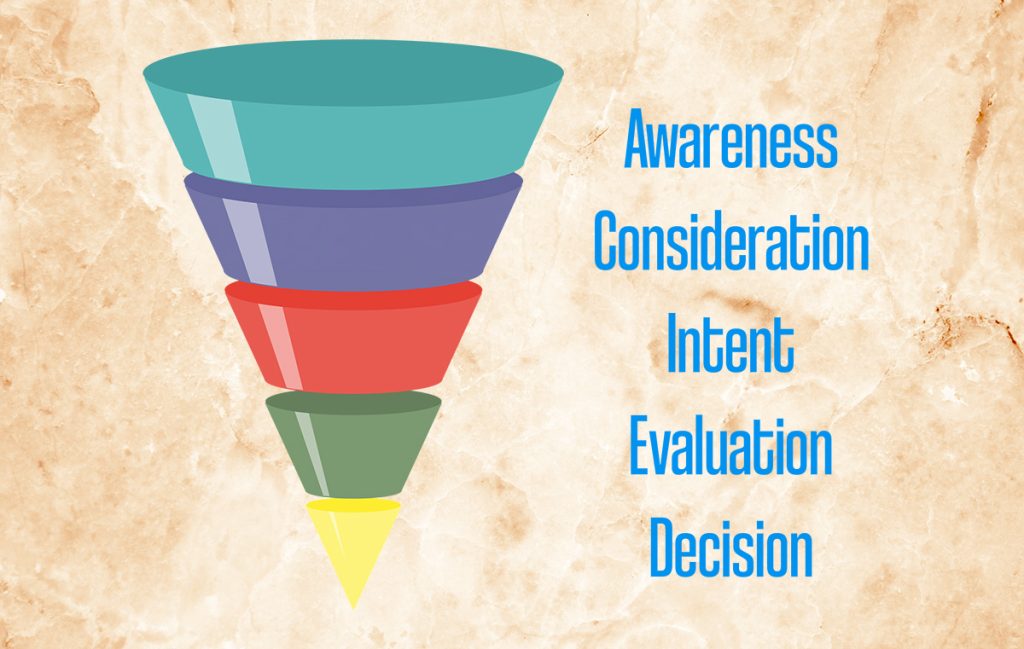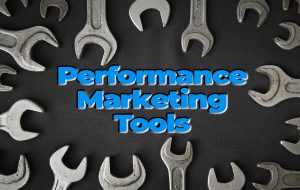The Search Funnel – Serving the Right Content at the Right Time for the Right Search query

In the dynamic landscape of paid search engine marketing, understanding the stages of the search continuum is essential in order to serve the right content for the right search queries. The search funnel represents the journey users undertake before making a purchase decision, spanning from broad, informational inquiries to highly specific, purchase-driven queries. This comprehensive guide delves into the nuances of the search funnel using the pet industry as a lens, showcasing how marketers can strategically align their efforts to engage potential customers at various stages of the buying cycle.
What is the Search Funnel (aka. the Search Continuum)?
Imagine the search funnel as a pathway users traverse when exploring products or services online. It comprises distinct stages, each representing a different level of user intent and engagement.
Here’s an example of this flow for a pug dog breeder looking to run search campaigns covering all funnel stages in the greater NYC area:
Top of Funnel (TOFU): Awareness Stage
-
- Query Example: “Best pets for small homes”
- This broad query reflects someone in the early stages of exploring pet options without a specific breed in mind. They’re looking for general information about suitable pets for their living space.
- Content Type: Informative Blog Posts
- Content Idea: “Choosing the Perfect Pet for Your Space”
- Purpose: Offer insights into various pets suitable for small homes, including pros and cons, care tips, and considerations. Engage users with helpful information without focusing on specific breeds.
Middle of Funnel (MOFU): Consideration Stage
-
- Query Example 1: “Most popular small dog breeds”
- As the user progresses, they are narrowing down their preferences to a specific category, in this case, small dog breeds. They’re seeking information about popular breeds within this category.
- Query Example 2: “Pug vs. French Bulldog characteristics”
- Here, the user is comparing characteristics between two breeds, indicating a more focused interest in certain breeds, such as pugs and French Bulldogs.
- Content Type: Comparative Guides and Infographics
- Content Idea 1: “Top 10 Small Dog Breeds: Which is Right for You?”
- Purpose: Provide a comparative analysis of popular small dog breeds, highlighting characteristics, temperaments, and suitability for different lifestyles.
- Content Idea 2: “Pug vs. French Bulldog: Choosing the Perfect Companion”
- Purpose: Offer a detailed comparison between these breeds, focusing on their distinct traits, exercise needs, grooming requirements, etc.
Further Middle of Funnel (MOFU): Intent
-
- Query Example: “Reputable pug breeders near me”
- The user is now actively seeking breeders for a particular breed (pugs) but hasn’t specified a location yet.
- Content Idea: “Pug Lovers Forum: Ask the Experts”
- Purpose: Create a space where users can engage with experts or experienced pug owners. This platform allows users to ask questions, seek advice, and share experiences related to finding reputable pug breeders, fostering a sense of community.
Bottom of Funnel (BOFU): Evaluation and Decision
-
- Query Example 1: “Pug dog breeders New York reviews”
- At this stage, the user is highly specific, indicating a strong intent to purchase and is now looking for reviews of pug breeders in New York, a clear sign of readiness to make a purchase decision.
- Query Example 2: “Best pug puppies for sale in NYC”
- This query reflects a user who is in the final stages of the buying cycle, looking for the best available options for pug puppies in New York City, ready to make a purchase.
- Content Type: Testimonials and Buyer’s Guides
- Content Idea: “What our customers say”
- Purpose: Feature detailed reviews and testimonials from customers who have purchased pugs from you in the customers or blog section of your website.
Each query showcases the user’s evolving intent and interest, progressing from general pet inquiries to specific breed preferences and, finally, to localized, purchase-oriented queries about pug breeders in New York. Marketers need to tailor their content and advertising strategies to align with these different stages of intent to effectively engage and convert potential customers.
Strategies for Online Marketers
Targeting Top of Funnel Search Queries:
Casting a wide net during the awareness stage is crucial. While users might not be actively looking to purchase, capturing their attention early in the buying cycle is instrumental. Marketers can create content optimized for informational queries to establish authority, build brand awareness, and nurture relationships with potential customers. This involves blog posts, guides, educational videos, and other informative content tailored to answer their initial queries.
Strengthening Intent as Users Dive Deeper:
As users progress down the funnel, their intent to purchase intensifies. Marketers can leverage this by tailoring content and advertising strategies to align with users’ evolving needs. Crafting product comparison guides, testimonials, and targeted ads showcasing specific features or benefits can sway users towards making a decision in favor of your product or service.
Aligning Strategies with Intent and Specificity:
The deeper users venture into the search funnel, the more crucial it becomes to provide relevant and targeted information. Aligning marketing strategies with these stages enables marketers to deliver personalized and compelling content that resonates with users’ intent, nudging them closer towards conversion.
Takeaways
The search funnel is a dynamic framework that guides marketers to tailor their strategies based on user intent and engagement levels. By recognizing the significance of top-of-funnel queries in establishing early connections and acknowledging the escalating intent as users progress deeper, marketers can craft impactful campaigns and content that resonate with users throughout their buying journey. Embracing the nuances of the search funnel empowers marketers to create meaningful engagements, foster relationships, and drive conversions in the ever-evolving landscape of digital marketing.









